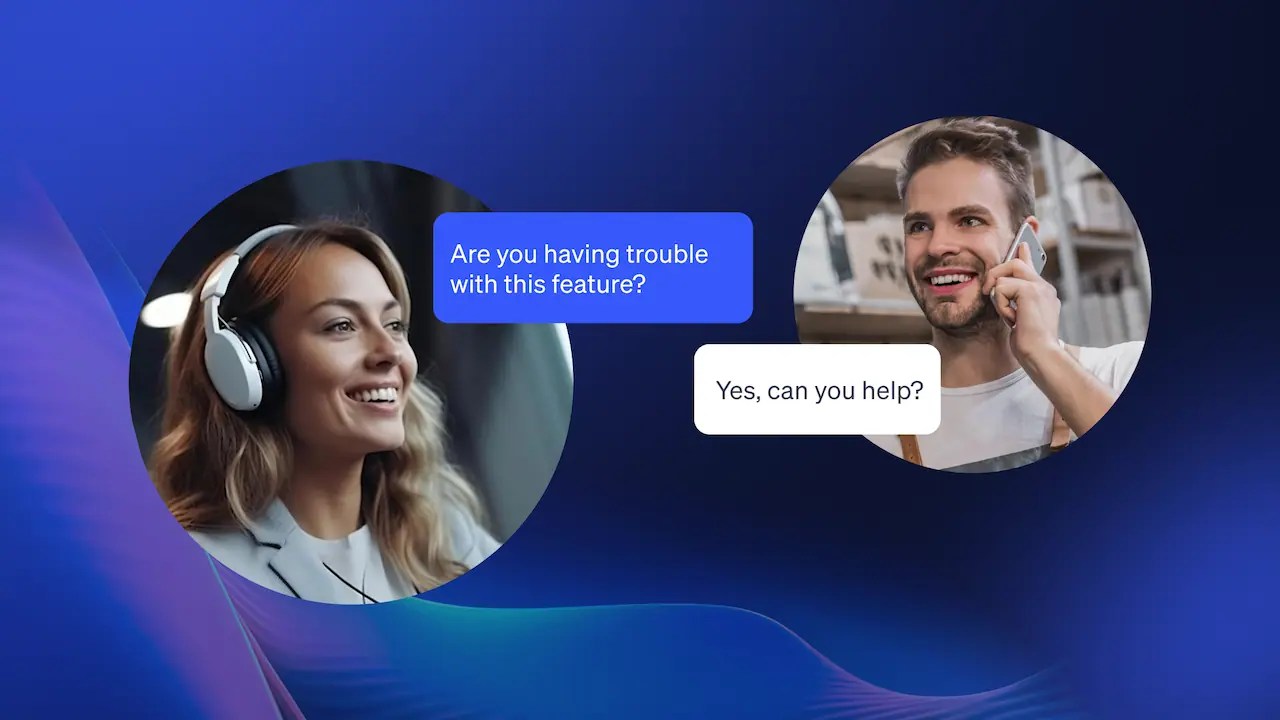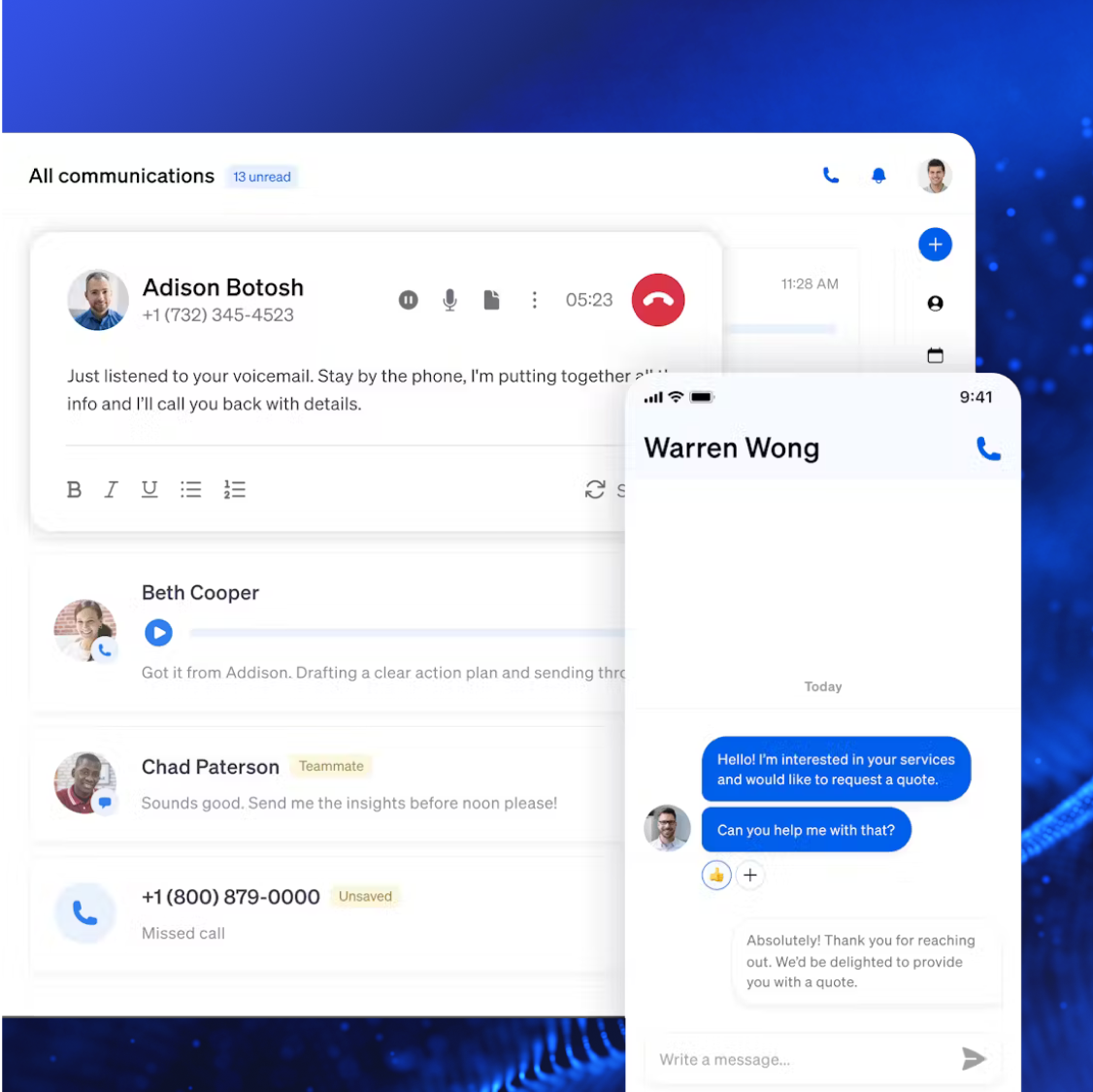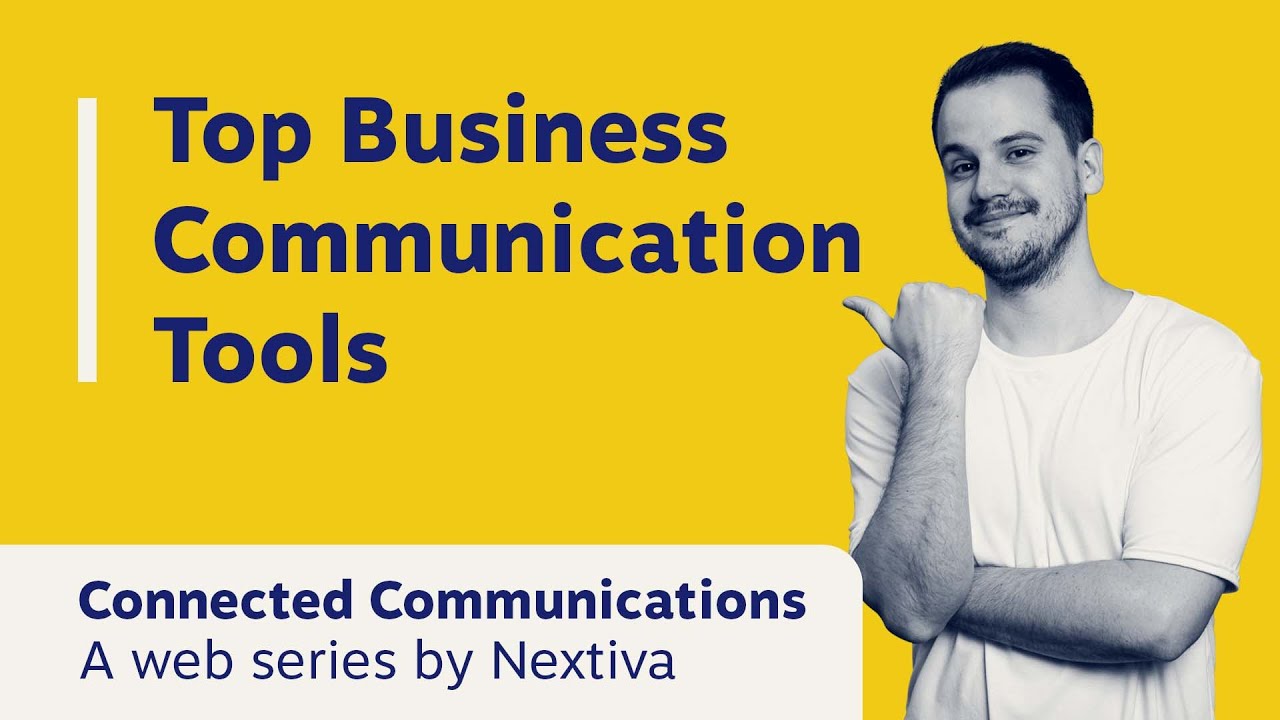These digital transformation examples can help inspire you, because undergoing a transformation journey for your business can be challenging and intimidating. It may involve implementing new digital technologies, shifting business strategies and processes, and even abandoning legacy systems.
Successful digital transformation, however, can improve your business processes, help you better meet rising customer expectations, increase employee productivity, and bolster profitability.
If you aren’t sure where to start, this post features five different real-world examples of digital transformation.
What Is Digital Transformation?
Digital transformation is the process of using technology and digital innovations to improve how things work. This may include improving customer-centric digital transformation initiatives that seek to improve the customer journey and focusing on refining internal business processes to increase productivity.
From digitizing all your physical documents to taking your communications from hardware-based to the cloud, the migration can greatly impact your business’s performance, employees, and culture. It can create a clear competitive advantage, helping your business stand out.
Common technologies being used for digital transformation efforts may include:
- Machine learning (ML): Utilizes complex algorithms to analyze potentially extensive data and offers suggestions or streamlines automation. These tools often “learn as they go.” They may offer suggestions for productivity optimization, user experiences, or cost savings, all of which can improve decision-making.
- Artificial intelligence (AI): Leverages technology to solve complex problems. Nextiva’s contact center solution, for example, uses generative AI to provide suggestions to agents during customer interactions.
- Internet of things: Uses physical products with sensors or software that connect to the internet. They’re often used in healthcare, manufacturing supply chain management, and in-store retail businesses to track everything from remote patient vitals to monitoring a warehouse’s packing processes.
- Cloud computing: Offers on-demand access to computing resources, including data storage, physical or virtual servers, and networking capabilities. Businesses often use these tools to scale their computing power.
- Robotics: Creates physical technology through engineering that can replicate or automate human actions. This technology can do everything from delivering pizza to helping surgeons conduct surgery.
- Automation: Improves business workflows with automation, including SaaS and business communication tools. This can be simple, like project management tools sending email notifications to team members when they’re assigned a task, or it can be more advanced, including complex employee onboarding processes.
The benefits of digital transformation can’t be overstated, making it well worth the additional costs and change management efforts needed to implement them — even if it means ditching the outdated legacy systems you’ve been using for ages.

Related: How to Approach Enterprise Digital Transformation in the Age of AI
Successful Digital Transformation Examples
Wondering how you can leverage the new opportunities offered by digital solutions?
Whether you’re looking for ideas about what to invest in with your digital transformation efforts, or you want proof it can work to get key stakeholders on board, these five examples can show you what’s possible with some creativity and new technologies ranging from generative AI to customer experience technology.

IKEA: From flatpack frustration to seamless solutions
IKEA is known for its self-assembly furniture, but it recognized a significant customer pain point: the often challenging assembly process.
While some handy customers had no problem putting together more complex pieces like dressers or nightstands with drawers, many of IKEA’s clientele still struggled with a skill gap. As a result, some customers would instead choose ready-made furniture or furniture suppliers that offered in-house delivery and assembly.
So, IKEA adapted. It acquired TaskRabbit, a “same-day DIYer” platform that connects consumers with people who can help with small tasks like painting a wall, mounting a TV, and furniture assembly.
IKEA also launched an augmented reality app that allows customers to place furniture in their homes virtually. They can then ensure that it’s a good physical and design fit before they make the purchase. This is particularly important because many customers choose to shop in-store, and this drives more informed purchase decisions and a more satisfying in-person and digital customer experience.

IKEA underwent a significant digital transformation with these two changes, which had significant impacts, including the following:
- Tripled e-commerce levels in three years
- Converted stores to act as fulfillment centers in addition to retail centers.
- Expanded data and analytics and altered how they’re included in decision-making
- Adapted to the closure of around 75% of stores during the pandemic and leveraged that time to accelerate changes
- Maintained the company culture despite many changes
Toyota: Gearing up for efficiency with digital tools
Toyota is a leader in the automotive industry, and it has heavily embraced digital tools to streamline both production and design processes.
The company uses computer-aided design for precise and efficient product development. Also, 3D printing allows for rapid prototyping and testing of new designs, significantly reducing both costs and time-to-market. Last year, Toyota also showcased how it uses generative AI to streamline vehicle design.

Toyota also uses VR for training purposes by creating immersive experiences for workers to learn new skills and procedures. These digital advancements contribute significantly to Toyota’s renowned manufacturing efficiency.
While Toyota has embraced new technology to make significant changes in its organization, it also takes precautions to manually ensure safety. The company conducts thorough and regular quality checks to ensure everything is working as it should so that safety and functionality aren’t sacrificed for speed — a common concern that some organizations have regarding AI and automation.
Goldman Sachs: Democratizing finance with digital banking
Goldman Sachs is a global banking, securities, and investment management firm that offers a wide range of financial services. The company launched its digital bank platform Marcus in 2020, which made its financial products more accessible to a wide range of customers.

The Marcus mobile app started with the option to set up recurring transactions or check account balances, but long term, the plan was for Marcus to act as the bank’s storefront. The goal was for the app to become the center of customer interactions by digitizing the customer experience.

And the app does something unique: it offers a choice of products, even those from competitors, to best allow customers to achieve different goals, like saving for college funds or retirement. By prioritizing the total customer experience, Goldman Sachs comes out ahead.
The company also leverages data analytics to gain valuable insights into customer behavior and market trends. This data-driven approach allows Goldman Sachs to personalize services and make informed financial decisions, further solidifying its position in a competitive market.
In 2023, the company kicked off a reorganization that dismantled Marcus into three different divisions. While the platform didn’t work out quite as intended, there was a powerful lesson to take away: keep your customers’ needs at the center of your digital transformation efforts.
Goldman Sachs tried to create a “digital speedboat” to compete with other competitors established in the space and reach new audiences. However, it focused predominantly on new branding and marketing. The reality is that attracting new lower-income customers outside the company’s previous demographics required a tailored approach to their specific needs.

Netflix: Binge-worthy content curated by data
Since its inception, Netflix has been using digital innovation to shake up entire industries. It revolutionized the entertainment industry with a data-driven approach to both content creation and delivery. While it originally delivered video content through direct mail, it shifted to a cloud-based approach and created streaming as we know it today.
Netflix’s recommendation algorithms personalize content suggestions for each user, keeping them engaged and hooked on the platform. The company tracks customer interest based on viewing activity but also lets customers indicate whether they like content with “thumbs up” or “thumbs down” buttons.

Netflix uses this data both on the app’s home screen and after a user has finished watching another show on the platform. It then shows trailers for the content it thinks specific users may be interested in to hopefully keep them watching.
Netflix also analyzes audience viewing data to identify key trends and then produces new, original content that aligns with its overall subscriber preferences. This focus on data ensures that viewers have a constant stream of new content that they’ll love, keeping them subscribed to the platform. As true crime has continually risen in popularity, for example, Netflix has subsequently rolled out more relevant content.

State Bank of India: Ultra-intelligent data integration
The State Bank of India (SBI) analyzes data in real time, providing the organization with immediate insights into both customer behavior and market trends. This allows SBI to make informed decisions quickly and adapt to changing market conditions.
The organization combines real-time data with AI capabilities to improve the customer experience, thanks to a five-year agreement with HCLSoftware for their MarTech solution.

The goal was to transform the customer interaction framework to facilitate personalized digital communications while still adhering to security requirements, like the Digital Personal Data Protection Act. SBI wants to market these changes effectively and in a personalized way.
By understanding customer needs and preferences, SBI can develop data-driven financial products and services that are more relevant and personalized. This can lead to increased customer satisfaction and loyalty.
Streamlining data management processes with an intelligent platform allows SBI to free up resources and improve overall operational efficiency.
How to (Successfully) Approach DX
We live in a digital world, and many executives and business owners are rethinking products, business strategies, and more. They may be looking to offer new products, like a banking mobile app, or to leverage process automation to reduce the time-to-market for new car models.
No matter what business model you use, or which industry you belong to, here’s what to keep in mind when implementing digital transformation efforts:
- Focus on customers: Solve customer pain points and personalize experiences with technology. Consider each demographic you’re targeting, and as you’re trying to expand your offerings, look for potential pain points for each audience segment.
- Embrace data: Leverage data to understand customers and inform decisions. You can also use this data to create more personalized and relevant user experiences throughout the customer lifecycle.
- Explore new tech: Utilize emerging technologies to improve efficiency and innovate. This can include software and hardware, and don’t be afraid to think outside the box.
- Be adaptable: Curate a culture of learning and adapt to the changing digital landscape. And remember that you can maintain your current company brand and culture while adapting to new changes.
- Track program effectiveness: Track key metrics to assess whether your new digital solutions are as effective as you’d hoped. Monitor metrics related to quality, customer experience, and cost.
- Don’t abandon the human touch: Maintain human oversight to ensure your new technology is working for you and delivering the best results possible. Toyota is a great example of how to leverage new technology in the digital age while still using human expertise to ensure an exceptional result.

Transforming Your Business Communications? Nextiva Can Help
The digital transformation process can be intensive and may even require new business strategies and processes. Knowing where to start can feel overwhelming, but if you’re ready to transform your business communications, we’re here to help.
Nextiva’s business communications solutions can help you modernize internal and external communications with cutting-edge features like the following:
- Advanced voice sentiment analysis: Use AI to analyze call sentiment from recorded calls to better understand customer pain points and identify agent training opportunities.
- Interactive voice response: Offer callers automated navigation and assistance to streamline their experience.
- Workforce optimization: Improve contact center performance and workforce engagement by ensuring the right staffing levels for peak activity times.
- Task automation: Automate repetitive tasks to save your team time and boost productivity.
- Dynamic scripting: Incorporate ML and AI into live, dynamic scripting to help agents say the right thing every time.
- Chatbots for high-performance teams: Answer simple customer questions through automated chatbots, and pass along complex concerns to live agents.
Mountains Community Hospital, for example, improved its employee and patient experiences by using Nextiva’s digital solutions. Team members downloaded the NextivaOne app to answer calls from anywhere in the hospital, as they were always on the go. The hospital also deployed our HIPAA-compliant voice, video, and fax for all users, improving and automating communications compliance.
“The Nextiva Professional Service team was doing the work that needed to be done, and I didn’t have to babysit — the team took care of everything.”
~Patrick Miller, IT manager and information security officer at Mountains Community Hospital
It’s important to keep an open mind about digital transformation and the impact it can have on your customers. The examples above have all demonstrated this, and your business can be next.
Related: Best Digital Transformation Companies & Their Key to Success
The top AI-powered contact center.
All conversations in one platform. Empowering agents. Satisfying customers.















 Customer Experience
Customer Experience 









